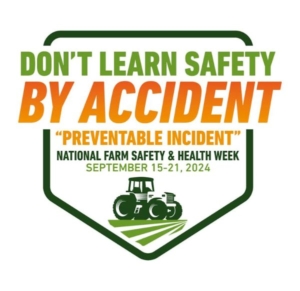
- This event has passed.
NFSHW24: Causes of Oxygen Deficiency, Confined Space, and Toxic Fumes Identified in the OSHA Accident Database
September 19, 2024 @ 11:00 am - 12:00 pm CDT

Last updated on December 30th, 2024 at 03:41 pm
 Summary: This webinar presents an in-depth analysis of records from the OSHA Accident Database, focusing on incidents coded as “Oxygen Deficiency,” “Confined Space,” and “Toxic Fume” from January 1, 2014, to May 23, 2024. The presentation will identify trends, common causes, and effective preventive measures for these hazardous conditions. Through a detailed examination of these records, the webinar provides critical insights into the factors contributing to oxygen deficiency, dangers within confined spaces, and the presence of toxic fumes in workplaces. The findings highlight the importance of targeted safety interventions to protect workers’ health and enhance workplace safety. Key trends and preventive strategies will be discussed to help industries implement effective measures against these hazards.
Summary: This webinar presents an in-depth analysis of records from the OSHA Accident Database, focusing on incidents coded as “Oxygen Deficiency,” “Confined Space,” and “Toxic Fume” from January 1, 2014, to May 23, 2024. The presentation will identify trends, common causes, and effective preventive measures for these hazardous conditions. Through a detailed examination of these records, the webinar provides critical insights into the factors contributing to oxygen deficiency, dangers within confined spaces, and the presence of toxic fumes in workplaces. The findings highlight the importance of targeted safety interventions to protect workers’ health and enhance workplace safety. Key trends and preventive strategies will be discussed to help industries implement effective measures against these hazards.
Intended Audience: Safety and Health Professionals, Industrial and Manufacturing Managers, Regulatory Compliance Officers, Environmental Health and Safety (EHS) Consultants, Emergency Responders, Human Resources Professionals, Labor Union Representatives
Objectives: At the end of this webinar, participants will be able to…
- Identify Common Causes of Confined Space Hazards: Explain what the OSHA definition of “confined space” is, and what further actions may be required to evaluate a confined space for potential hazards to determine if the space is a “permit-required confined space” (PRCS). Explain the difference between what OSHA requires for a “confined space” versus a PRCS. Understand the primary factors leading to oxygen deficiency, confined space hazards, and toxic fume exposure based on the analysis of the OSHA Accident Database.
- Recognize Trends and Patterns: Learn about the trends and patterns in incidents related to these hazardous conditions over the past decade, enabling better anticipation and prevention of such events in various industries. Be able to explain common scenarios of how each of those three low oxygen situations may arise (from the OSHA Accident database records).
- Implement Preventive Measures: Gain knowledge of effective strategies and preventive measures that can be implemented to mitigate the risks associated with oxygen deficiency, confined spaces, and toxic fumes, thereby enhancing workplace safety.
- Improve Safety Protocols: Discover how to use the insights from the OSHA Accident Database to refine and improve existing safety protocols and training programs within your organization to protect workers’ health.
Presenters:
Chiemezie Anthony Udemba, MS, Ohio State University
Jerry Purswell, PhD, Colorado State University-Pueblo
 Continuing Education: The University of Cincinnati, Department of Environmental and Public Health Sciences, Education and Research Center offers 1.0 contact hours for this activity. Upon completing the evaluation, learners will receive a certificate of completion. This course can meet continuing education requirements for a variety of professionals including: BGC criteria for IH/CIH professionals, BCSP criteria for safety professionals, CPH criteria for public health professionals. Please contact your accrediting agency regarding questions about receiving credits for this activity.
Continuing Education: The University of Cincinnati, Department of Environmental and Public Health Sciences, Education and Research Center offers 1.0 contact hours for this activity. Upon completing the evaluation, learners will receive a certificate of completion. This course can meet continuing education requirements for a variety of professionals including: BGC criteria for IH/CIH professionals, BCSP criteria for safety professionals, CPH criteria for public health professionals. Please contact your accrediting agency regarding questions about receiving credits for this activity.
A special thank you to our NFSHW sponsors:
A special thank you to our NFSHW sponsors:















